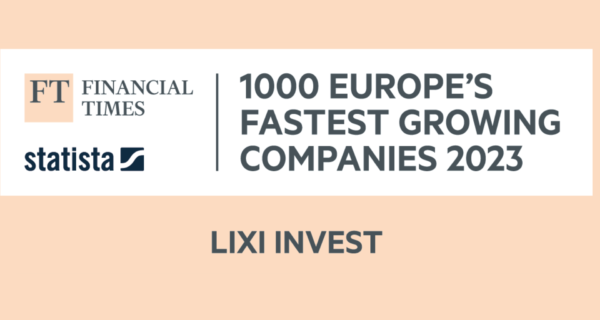In this article, I have put together some of the best books to read on the topics of investing, personal finance, money, and behavioral economics.
When it comes to the investing arena, drivel abounds out there.
Purely motivational works, based on a follow-me-blindly kind of thing and the most exotic forms of trading, are put in the same category as books authored by Nobel Prize laureates, successful investors who have been roaming the markets for decades.
As if this were not enough, the difference in the level of research work and public discourse between Europe and the United States, the epicenter of finance, is abysmal.
Unfortunately, we are still in the Stone Age on these shores, barring few exceptions.
As a result, in order to save you a boatload of time, I have decided to select for you the best investing books available out there.
The books are broken down into two sections: for people who have just gotten into investing (or want to start dabbling in it) and for those who are already more advanced investors.
Are you ready?
Books for people who want to get started or rookies
Money: Master The Game – Tony Robbins
Investing your money is not merely a technical affair.
Being up to speed with all the financial products and the mathematical rules that govern this world may not be good enough if you have no knowledge of the psychological mechanisms that govern the investing world.
“Money: Master The Game,” penned by Anthony Robbins, is a great introduction to this topic.
The book revolves heavily around the way in which your relationship with money should be described (and improved), but there are also more technical sections that talk about investment products and how the stock market works.
As a cherry on top of the cake, there are also interviews with the most famous investors ever, as well as advice on how to create a portfolio that is well-equipped to weather all economic seasons, Ray Dalio’s so-called “All-Weather Portfolio.”
This is quite a lengthy book (688 pages), but there are entire chapters you can skip right over.
For example, the description of the American pension system and some financial products that are not available in Europe.
Leaving out these sections, the book is a quick and enjoyable read.
Unshakeable – Tony Robbins
If you have no patience to read “Money: Master The Game” and are not interested in the interviews with the greatest investors of all time, “Unshakeable” is a superb alternative.
The book was co-written by Peter Mallouk, an independent American financial adviser who manages millions of dollars for his clients and helps them to develop the right financial strategy.
This is a very hands-on book, a bona fide guide on how to set up your own investment plan, and it is my personal favorite for anyone who wants to dip their toes in the investing pool with a more international scope.
As it’s par for the course in these cases, there are specific situations that are typical of the American system, but all the principles featured in this book can be implemented right off the bat by investors all over the world.
Fooled by Randomness – Nassim Nicholas Taleb
Nassim Taleb is one of my favorite authors.
Aside from his irreverent style, especially aimed at holier-than-thou economists, he offers up some very interesting reflections on human nature and on how we react to randomness and uncertainty.
“Fooled by Randomness” was the first book he authored for a wider audience, and it revolves around a key topic: how difficult it is for anyone not to be fooled by randomness.
It is a Statistics 101 course, but not the one you studied at university featuring balls and urns.
It’s real-world applied statistics, the one where we are in the dark about the starting odds.
Moreover, if you are a new reader to behavioral economics, this book is an excellent introduction to some of the most famous biases, such as survivorship bias and overconfidence.
While reading this book, it will strike you as a guide for you to better make sense of and get a grip on your emotions when investing, especially during moments of euphoria and panic.
The Little Book of Common Sense Investing – John Bogle
The author of this book is John “Jack” Bogle, a legend. He is the inventor of Index Funds, which are funds that track indexes and the inspiration for the majority of the properly diversified ETFs we often talk about here.
A big Kahuna like Warren Buffett said about him:
“Jack has done more for American investors than any other individual I have ever known.”
And investors in the U.S. (and beyond) have seen to it that his hard work paid off.
The investment fund he launched, Vanguard, is #1 in the world in terms of assets under management.
Despite this, it continues to charge very low fees to allow investors to bring home the highest possible returns.
In “The Little Book of Common Sense Investing,” Jack Bogle explains in great detail his investment philosophy and why index-tracking funds are the best option for non-professional investors.
This book is not recommended for people who have zero investing experience.
Still, if you already have some experience, but the concept of an “automatic” fund that simply tracks an index (in other words, an ETF) somehow scares you, or you just want to get a better sense of the reason why it is so effective, then this is just the book for you.
A Random Walk Down Wall Street – Burton G. Malkiel
“A Random Walk Down Wall Street” is one of the most classic investing books.
Written in 1973 by Burton Gordon Malkiel, it has survived the test of time and is now in its twelfth (!) edition, which also features a small chapter dedicated to the 2017 cryptocurrency bubble.
This book is fantastic for those people who already have basic knowledge of the investing world and want to get a deeper understanding of some basic concepts.
While reading it, you will find many insights on how to build an investment portfolio (unfortunately, as always, just with American products) and a “small guide for speculators,” which analyzes two of the most common types of instruments for buying individual stocks: technical and fundamental analysis.
Technical analysis is based on stock price movements and trading volumes, and it is heavily focused on understanding the psychology of markets.
Fundamental analysis, through the analysis of balance sheets, industries, and the management in charge, tries to get to the bottom of a company’s intrinsic value, hence assessing whether the share representing it is being traded at a price that is higher or lower than its intrinsic value.
As a cherry on top of the cake, the final chapters of the book are dedicated to a mini-guide featuring the key principles for building an investment plan.
For example, how to invest according to your own goals, while making sure to regularly rebalance your portfolio.
The very same principles we have examined and adapted to the European market in LIXI STRATEGY.
Books for more seasoned investors (who want to learn more)
The Four Pillars of Investing – William Bernstein
The name William Bernstein is little known to most people, even in the United States.
Bernstein is a neurologist who decided to switch career paths and is now a financial system scholar and an independent financial adviser.
His innate drive to share his financial knowledge has led him to author several books, and “The 4 Pillars of Investing” is his most popular work.
This book is a very U.S.-oriented guide that lays down the foundation you need to have in place in order to be able to invest successfully.
It explores the theoretical groundwork (greater risk, greater return), the history of markets, the psychology of investors, and the institutions you need to deal with while investing.
This book combines elements that are easier to understand with more advanced ones.
As a result, it is not a good first book to start with to get your feet wet in the investing arena.
But if you already have some experience and want to get a better understanding of the most technical side of setting up a portfolio, then it is a great option.
You will also find a few ready-made portfolios in there, but they are heavily U.S.-centric, which is of little use to European investors.
Principles for Success – Ray Dalio
Ray Dalio is one of the best investors of all time.
He is the founder of Bridgewater Associates, an investment firm that manages $150 billion and only welcomes clients with a minimum of $5 billion in assets.
And that’s not all: Ray Dalio seems to be one of the very few managers who is able to really beat the market, which is why this is definitely a book worth a careful reading.
Still, before you get started on it, I just want to point out something important.
This book does not provide you with any practical tips on how to invest.
In the book, you can find three parts:
- An autobiographical part, which is interesting if you are curious to learn more about the life of a successful investor;
- “Principles for success in life,” in which Dalio examines the principles to use for taking the best decisions in your personal life, based primarily on radical truth;
- “Principles for success at work,” which is a must-read chapter if you are an entrepreneur who wants to build a successful business.
If you are looking for information on where Ray Dalio is investing his money, or you simply want the answer to the question, “Where can I put my money?”, you will be left disappointed.
But there are nonetheless a few gems that have investing-adjacent value, especially the behavioral part, which are worth reading in and of themselves.
Nudge – Richard Taler
Richard Thaler is one of the most influential figures in behavioral economics and winner of the 2017 Nobel Prize in Economic Sciences.
Before becoming worldwide famous, Thaler authored several books that analyzed the key areas of behavioral economics, and “Nudge” was among the very first.
This book introduced the concept of choice architecture, or the systems governing the way we think.
The ones we use to make all the decisions, both more and less important. We often don’t realize that we are being silently guided toward an alternative, which is not always the best one for us.
Nudge is an antidote against unconscious decisions.
After reading it, you will feel like you are in a post-Matrix world, and you will be looking with different eyes both at your own decisions and those of other people.
Rather than on investing, this book focuses on “decision making,” the science of making the best possible decisions, while covering a plethora of subjects.
But you will also find insights arising from the world of behavioral economics and investments, so as to make your investment process even better.
Irrational Exuberance – Robert Shiller
“Irrational Exuberance” is an expression first used in 1996 by Alan Greenspan, the former president of the FED (the American equivalent of the ECB).
The backdrop?
A description of the American stock market at the time, with the technological bubble in full swing and a lot of people who had quit their jobs to become full-time traders.
Robert Shiller, the winner of the Nobel Prize in Economics in 2013, decided to write, shortly before 2000, a cautionary book about the technology bubble that had blown out to great proportions.
This bubble presented an opportunity to conduct a scientific study on what the contributing factors to the emergence of economic bubbles were, in order to identify and steer clear of financial bubbles.
The end result was Irrational Euphoria, a quasi-handbook that extensively explains what turbulences are, and one you should keep handy to avoid going into panic mode when a plane starts shaking violently.
In it, you will find a description of the cultural, economic, and psychological elements that give rise to financial bubbles.
The book has had three reprints, and the last one (2016) also features some interesting elements about the 2006 real estate bubble in the U.S., as well as some points for us to make a better assessment of the current situation, particularly a brand new chapter about a potential bubble in the bond market.
Antifragile – Nassim Nicholas Taleb
We all know what fragile means.
Something that breaks easily and does not withstand external shocks.
But what is the opposite of fragile?
The English language doesn’t really help us out in this case. The most common answers are “robust,” “resistant,” or “resilient” (if you want to be hip about it).
These answers are not an exact description of the opposite of fragile, but only an intermediate stage, in which something remains indifferent to an event. It does not get better, nor does it get worse.
The true opposite of fragile, Antifragile, is a word coined by Nassim Taleb.
Antifragile is not an in-depth manual on how to invest your money.
If anything, there are more segments regarding the medical world, nutrition, and politics that don’t have a whole lot to do with this topic, at least at first glance.
Although they seem unrelated, they actually allow you to get a better understanding of the theoretical concepts of this book, hence putting them to good use in the investing landscape (and beyond).
Two examples stand out, the via negativa and the barbell strategy.
A must-read book for anyone who wants to fine-tune their investing philosophy.
I X Comandamenti dell’Investimento Finanziario (The X Commandments of Financial Investing) – Luca Lixi
Yes, as you may have noticed by making it to the end of this list, I have included Luca’s book as well.
Simply put, for those people who know zilch about finance and have been told all their life that the stock market is a gambling den, and that investors ultimately end up losing money, this is the starting point.
This is a book tailor-made for anyone who wants to get the hang of this world and does not possess expert knowledge.
Ten commandments, a whole lot of common sense, and the main mistakes to steer clear of.
By the time you reach the end of this book, you will have a solid foundation on which to build your investment strategy.



(and please don’t forget to leave a review!)
That’s all for this list, which we will be adding to over time, of the best books to read about investing and finance.
I hope you will find this list helpful. Have you read any of the recommended books?
Let me know in the comments, or share your book recommendation
Bye for now,
Lorenzo





















